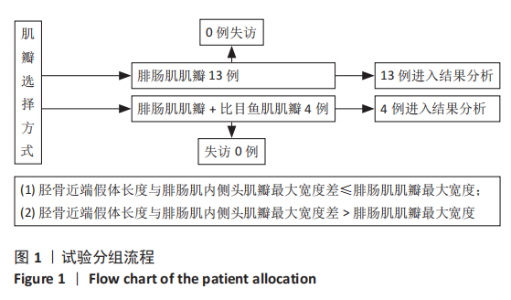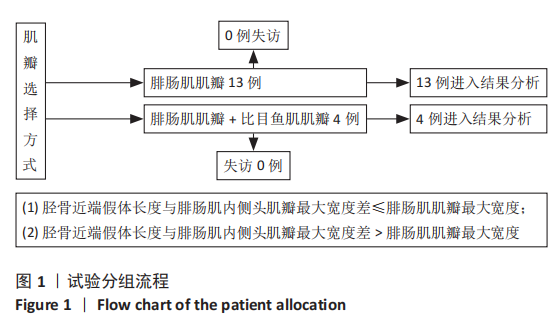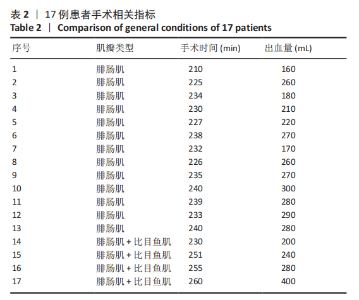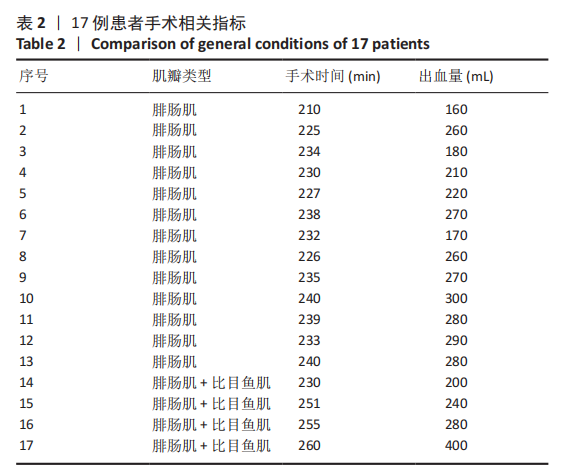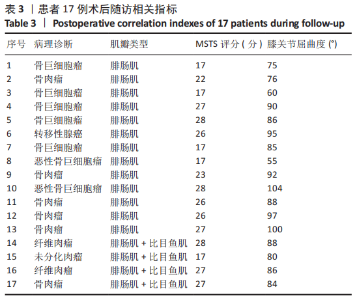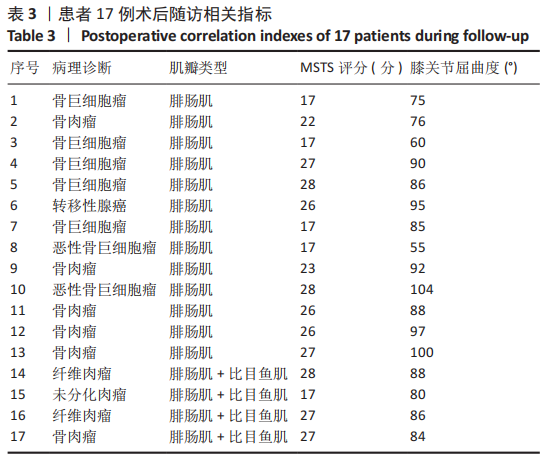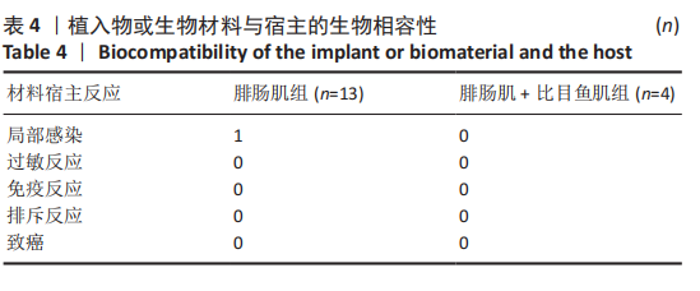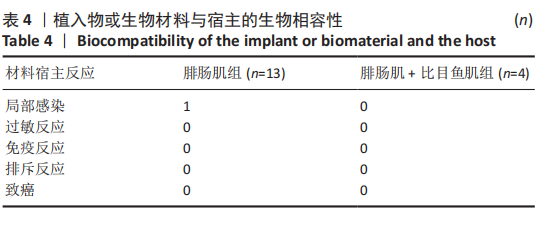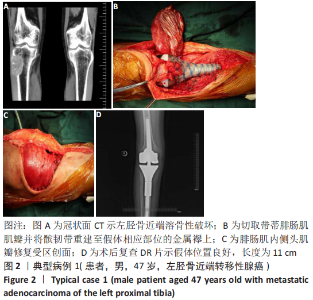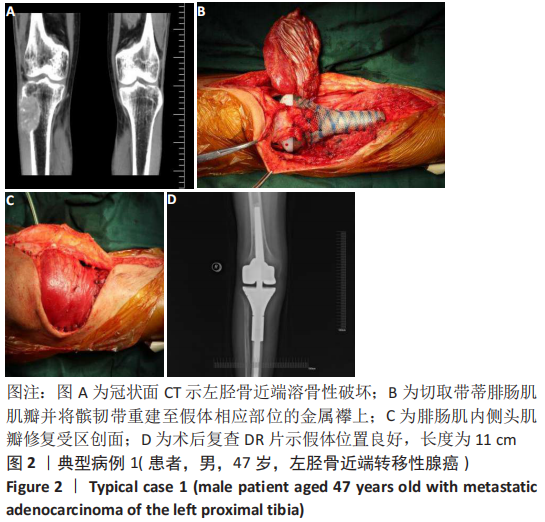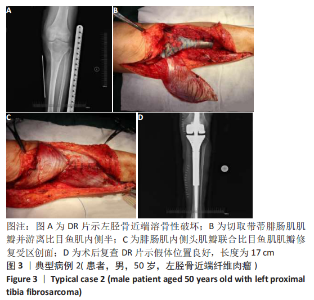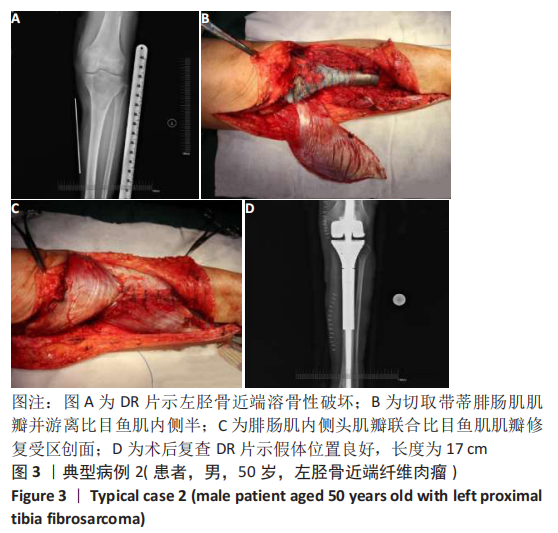[1] 徐明,郑凯,于秀淳,等.肿瘤型膝关节假体置换治疗胫骨近端骨巨细胞瘤多中心回顾性研究[J].中国骨与关节杂志,2017,6(2):87-91.
[2] 张铎安,熊永发,郭朝堂,等.可旋转稳定型假体与单纯铰链型假体治疗胫骨近端恶性骨肿瘤的临床对照研究[J].实用癌症杂志, 2017,32(6):1028-1030.
[3] 荆琳,张洪美,韩露,等.全膝关节置换治疗膝关节恶性骨肿瘤[J].中华骨与关节外科杂志,2015,8(5):425-428.
[4] 张向丽.胫骨近端轻微骨折X射线平片分析[J].世界最新医学信息文摘,2017,17(27):23-26.
[5] ENNEKING WF, DUNHAM W, GEBHARDT MC, et al. A system for the functional evaluation of reconstructive procedures after surgical treatment of tumors of the musculoskeletal system. Clin Orthop Relat Res. 1993;286:241-246.
[6] ONG SW, GAN LP, CHIA DSY. The double muscle gastrocnemius-soleus flap in resurfacing large lower limb defects: modifications and outcomes. J Orthop. 2019;17:13-16.
[7] TOSUN B, SELEK O, GOK U, et al. Medial gastrocnemius muscle flap for the reconstruction of unhealed amputation stumps. J Wound Care. 2017;26(8):504-507.
[8] FELDMAN JJ, COHEN BE, MAY JW. The medial gastrocnemius myocutaneous flap. Plast Reconstr Surg. 1978;61(4):531-539.
[9] AUREGAN JC, BEGUE T, TOMENO B, et al. Distally-based vastus lateralis muscle flap: a salvage alternative to address complex soft tissue defects around the knee. Orthop Traumatol Surg Res. 2010;96(2):180-184.
[10] SWARTZ WM, RAMASASTRY SS, MCGILL JR, et al. Distally based vastus lateralis muscle flap for cover age of wounds about the knee. Plast Reconstr Surg. 1987;80(2):255-265.
[11] 刘梦栋,杨薛康,韩夫,等.膝部严重烧创伤患者皮肤软组织缺损创面修复及功能重建系统康复治疗策略[J].中华烧伤杂志,2018, 34(5):266-270.
[12] SAHASRABUDHE P, PANSE N, BAHETI B, et al. Reconstruction of complex soft-tissue defect around the knee joint with distally based split vastus lateralis musculocutaneous flap: a new technique. Plast Reconstr Aesthet Surg. 2015;68(1):35-39.
[13] PETTY CT, HOHUE RJ. Closure of an exposed knee joint by use of a sartorius muscle flap: case report. Plast Reconstr Surg. 1978;62(3): 458-461.
[14] 罗伟,陈顺兴,游钦.不同皮瓣转移修复胫前软组织缺损的方法分析[J].临床和实验医学杂志,2012,11(13):1038-1039.
[15] DUBOUSSET J, MISSENARD G, KALIFA C. Management of osteogenic sarcoma in children and adolescents. Clin Orthop Relat Res.1991;(270):52-59.
[16] Chim H, Tan BK, Tan MH, et al. Optimizing the use of local muscle flaps for knee megaprosthesis coverage. Ann Plast Surg. 2007;59(4):398-403.
[17] MELLER I, ARICHE A, SAGI A. The role of the gastrocnemius muscle flap in limb-sparing surgery for bone sarcomas of the distal femur: a proposed classification of muscle transfers. Plast Reconstr Surg. 1997;99(3):751-756.
[18] LI X, YANG ZP. Soft tissue reconstruction with sagittal split anterior tibial muscle transfer and medial gastrocnemius transposition in limb-salvage surgery of bone tumors in a proximal tibia. Ann Plast Surg. 2008;61(2): 204-208.
[19] 陆维举,李斌,钱宏波,等.Ⅰ期组合肌瓣加骨移植治疗小腿中上段骨软组织缺损[J].医学研究生学报,2009,22(3):256-259.
[20] 张功林,师富贵,胡军,等.小腿内侧皮瓣联合内侧半比目鱼肌瓣桥式带蒂转移术治疗对侧小腿软组织缺损[J].中华创伤骨科杂志, 2020,22(2):162-165.
[21] UNLUER Z, Al-AJAM Y, Al-BENNA S. Functional outcome after reconstruction of traumatic soft tissue defects in the lower half of the leg with distally based medial hemisoleus muscle flaps: a case series and literature review. Ann Plast Surg. 2018;81(4):468-471.
[22] Fisal AA, Abdel-Hamid Romeih M, Younes LM, et al. Distally based medial hemisoleus muscle flap for wound coverage in the distal third of the leg. Clin Podiatr Med Surg. 2020;37(4):631-647.
[23] 俞光荣,蔡宣松,袁锋,等.腓肠肌及比目鱼肌瓣在胫骨近端恶性骨肿瘤保肢术的应用[J].上海医学,2003,26(2):99-101.
[24] AHLMANN ER, MENENDEZ LR, KERMANI C, et al. Survivorship and clinical outcome of modular endoprosthetic reconstruction for neoplastic disease of the lower limb. J Bone Joint Surg Br. 2006;88(6): 790-795.
[25] PLOTZ W, RECHL H, BURGKART R, et al. Limb salvage with tumor endoprostheses for malignant tumors of the knee. Clin Orthop Relat Res. 2002;(405):207-215.
[26] 中华医学会骨科学分会骨肿瘤学组.四肢骨肉瘤保肢治疗指南[J].中华骨科杂志,2019,39(1):1-9.
[27] 徐明,郑凯,韩加,等.侵入膝关节腔的恶性肿瘤关节外切除4例临床观察[J].中华解剖与临床杂志,2019,24(1):28-31.
[28] 李立志,吕智.补片在骨肿瘤假体中的应用[J].实用骨科杂志,2017, 23(7):597-599.
[29] HASHEMI SA, SALEHI N, AZARIFAR F, et al. Evaluation of knee joint after open reduction and internal fixation surgery of posterior cruciate ligament in patients with avulsion fracture. Open Access Maced J Med Sci. 2019;7(6):982-986.
[30] PUA YH, POON CL, SEAH FJ, et al. Predicting individual knee range of motion, knee pain, and walking limitation outcomes following total knee arthroplasty. Acta Orthop. 2019;90(2):179-186.
[31] 徐海荣,牛晓辉,张清,等.人工补片用于胫骨假体近端重建髌韧带附丽的生物力学特点和组织学表现[J].中国骨与关节杂志,2012, 1(6):627-630.
(责任编辑:WJ,ZN,ZH)
|
